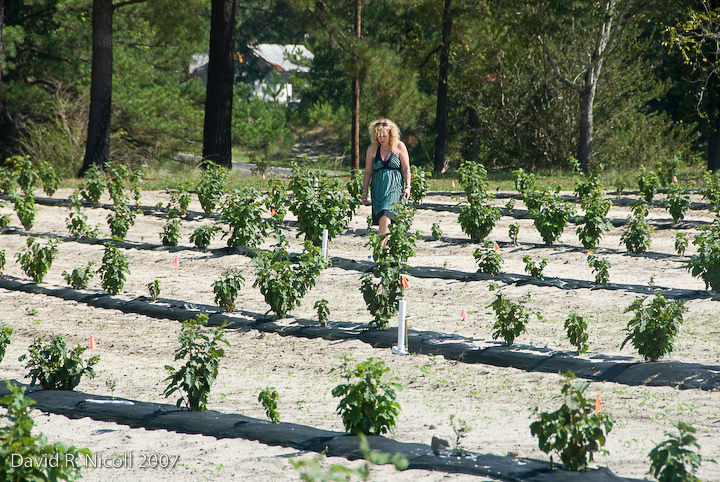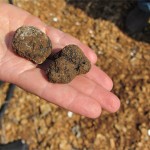Truffles and Their Price Tags: Why Do They Change?
30 Jul 2018, by in Truffle FavesTruffles are a highly sought-after delicacy around the world by chefs and diners alike. And, as with anything in high demand, there is a price tag to match. But why do these price tags vary so much from year to year and sometimes come in more expensive than we would expect? There are real reasons behind these price variations, and here are some insights on a few of those.
What’s the weather got to do with it?

Oh, you know, just surveying some truffle trees!
The journey of truffle farming is not an easy one, with weather as one of the main influences on growth. Truffles tend to grow right after heavy rains when the soil is damp. They grow in similar conditions to other fungi, shying away from extreme heat and freezing environments, preferring a stable temperature and sufficient drainage. Climate is crucial, too—with the right stable climate being where winters are cool and wet, and summers warm and dry, creating the perfect truffle growing habitat.
Truffles need a very particular environment to grow in because if this is disturbed in any way or conditions are far from perfect, the on-flow effect means truffles don’t grow as they should. All this decreases the harvest and pushes up the prices.
With the worldwide weather phenomena of climate change well and truly upon us, and temperatures continuing to rapidly increase, you can see why the weather is impacting the growth of truffles more than ever before.
What else impacts truffle prices?

Truffle pasta dishes are no gimmick but they sure will set you back.
It’s not just about the weather when it comes to truffle prices. There are a few more reasons behind truffle price variations:
1. Unpredictability
Truffles are natural products with unpredictable growth patterns and growing seasons, keeping the supply just as unpredictable and the demand, incredibly high.
2. Man Labor
Because they grow off of tree roots underground, truffles are quite difficult to locate and would often require truffle hunters with specially trained dogs to be harvested. They traditionally used pigs—until it was discovered that dogs are easier to manage and far less likely to eat their truffle finds (we don’t blame them for being unable to resist). And because a single truffle hunter with a dog can only find a small amount, hiring more truffle hunters with dogs is imperative to ensure that maximum truffle quantity is collected.
3. Time
Truffles have a relatively short shelf life. Sure, they keep for weeks when stored properly but their aroma and flavor halve in 4-5 days. And being 70% water, they lose 2-3% of their precious moisture each day they’re out of the ground, causing them to grow out of their prime too quickly. To combat this, fresh truffles need to be delivered to restaurants and distributors within 36 hours of harvest; and the cost to pull that off almost always adds up.
There are plenty of cost drivers behind the price variations of truffles—from weather and unpredictability, down to truffle hunters with dogs who go to extra lengths to find and harvest them, and the overall race against time. Despite the hefty price tag, however, the market for truffles is constantly growing—with not only the best chefs but also home cooks all over the world, purchasing and experimenting with them in their kitchen.
Want to learn more about the wonders of truffles? Browse through our blog to get started.

- Supplying in season truffles
- Working with Chefs and Staffs
- Pairing Wines and Recipes
- Special Appearances & Presentations







